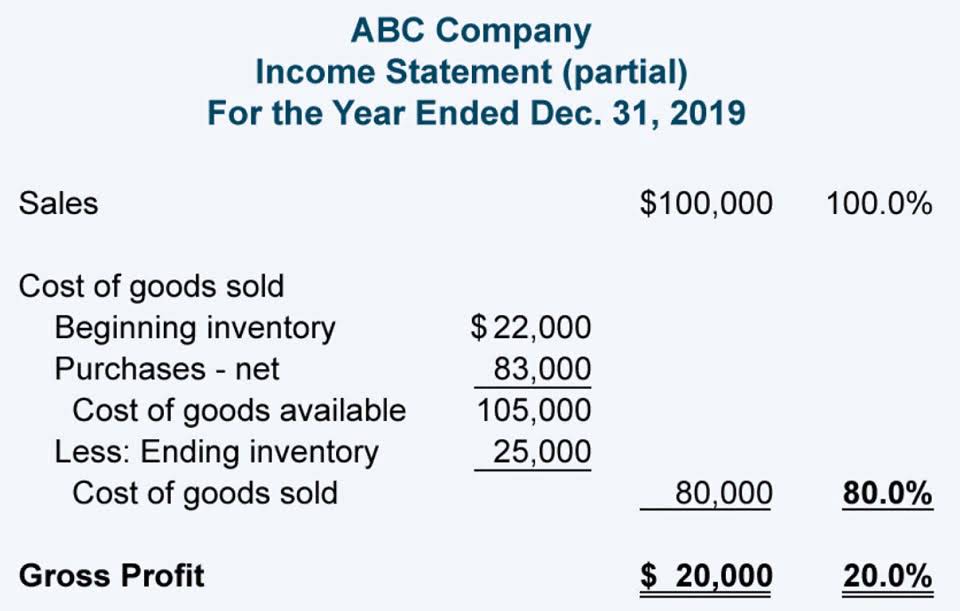
Once costs have been allocated, and meets the criteria for capitalization, it is added to the CIP asset account in the company’s general ledger. The cost is then amortized over the asset’s useful life through depreciation expenses in subsequent accounting periods. Under the POC method, revenue is recognized as work progresses and can be calculated by multiplying the total estimated revenue by the percentage of completion. This approach ensures that revenue is matched with the corresponding expenses and provides a more realistic view of the financial performance of a construction project. Businesses must prepare accurate, up-to-date financial reports that account for their expenses and profits. A balance sheet shows a company’s net worth at any given time and includes all of its assets, even those not currently in use.
Lawton officials say mechanisms in place to ensure CIP projects are done
In conclusion, construction-in-progress accounting is essential for effective construction financial management. Allocating costs is a crucial aaccountingspect of construction-in-progress (CIP) accounting. It involves assigning expenses incurred during a construction project to the appropriate asset account systematically and accurately. This process ensures that the financial statements accurately reflect the cost of cip account constructing a long-term asset, such as a building or infrastructure, and that the project is completed within the allocated budget. Another significant aspect of managing CIP in a multi-project environment is maintaining accurate and up-to-date financial records. Each project must be tracked individually to ensure that costs are correctly attributed and financial statements reflect the true state of each project.
How does CIP affect project management?
Company ABC would now start to depreciate the equipment since the project finished. Blockchain – Shared ledgers create immutable records of transactions, improving verification and security. As technology continues transforming construction industry operations, CIP automation is becoming an imperative. Here is an example to help you visualize what construction-in-progress may look like in your accounting books. The basis for the effort expended can be labor hours, the material used, or machine hours. For instance, if a cement manufacturing company is expanding the manufacturing unit.
Navigating Revenue Recognition Methods: Percentage of Completion
- For instance, if a project is 60% complete, 60% of the total contract revenue can be recognized.
- These changes must be carefully documented and approved to ensure that the additional revenue and costs are accurately reflected in the financial statements.
- – Construction-in-progress and other accounts must be separate to minimize the hassle and keep records balanced.
- Once construction is complete, the asset shifts to the appropriate fixed asset account.
- Generally accepted accounting principles (GAAP) requires the percentage of completion in journal entries whenever possible to account for construction in progress.
- During the construction phase, costs are capitalized rather than expensed, meaning they are recorded as an asset on the balance sheet.
This includes reflecting CIP accounting data accurately on mandatory financial statements. A construction company might come to your mind by reading the phrase “Construction In Progress.” Indeed, construction in progress accounting is mostly used by construction firms. Besides business dealing in building huge fixed assets, also use construction in progress accounting. The credit side of this entry might be to cash if paid for immediately or to the business’s inventory if it used the inventory assets in the construction. Companies that don’t track CIP costs accurately and separately make their records more complicated than they need to be.


Effective communication and collaboration are also paramount in a multi-project setting. With various teams working on different projects, ensuring that everyone is on the same page can be challenging. Implementing a centralized communication platform, such as Slack or Microsoft Teams, can facilitate better coordination and information sharing. Regular meetings and updates are essential to keep all stakeholders informed about project progress, potential issues, and resource needs. This collaborative approach helps in identifying and addressing problems early, thereby reducing the risk of delays and cost overruns. – Construction-in-progress and other accounts must be separate to minimize the hassle and keep records balanced.
- By accurately monitoring these costs, construction companies can make informed decisions, control project budgets, ensure profitability, and track progress efficiently.
- Instead of being ongoing expenses, they’re now considered assets that will provide value over time.
- They should NOT be stored in the CIP account; otherwise, there is a considerable risk that expensable items will not actually be charged off for some time.
- While costs are added to the construction in progress, related CIP account is debited with corresponding credits to accounts payable, accrued expenses, inventory, cash, and others.
- It involves dividing the asset’s cost by its useful life and allocating an equal amount of the cost to each accounting period over the asset’s life.
- These platforms allow for real-time tracking of expenses, revenue recognition, and financial reporting, thereby enabling better decision-making and financial control.
- Therefore, companies must practice diligence in accounting for any and all expenses tied to a particular construction project.
Financial Management: Overview and Role and Responsibilities
Monitoring these cash flows is essential for maintaining liquidity and ensuring that the company can meet its short-term obligations while investing in long-term growth. Conducting monthly or quarterly reviews allows for the identification of discrepancies and ensures that all costs are being recorded accurately. These reviews should involve cross-functional teams, including project managers, accountants, and procurement officers, to provide a comprehensive overview of the project’s financial health. Utilizing tools like Microsoft Power BI or Tableau can enhance these reviews by offering visual analytics and dashboards that make data easier to interpret. Construction-in-progress or CIP accounting is a technique accountants use to manage costs linked to fixed-asset constructions. This technique works because construction projects are way more complex than other projects.

Overbilling and underbilling are common challenges in construction accounting that can negatively affect project finances. Overbilling refers to charging more than the actual work completed, while underbilling occurs when the amount billed is less than the work performed. In the design and planning stage, construction professionals create detailed construction plans and blueprints for a new building. https://www.bookstime.com/articles/quickbooks-accountants continue to accumulate costs related to design and planning activities, including architectural and engineering fees. Accurate CIP tracking paves the way for successful on-time and on-budget project delivery – delivering immense value for construction firms and their stakeholders. Asset Valuation – Faulty CIP tracking can lead to assets being undervalued or overvalued on the balance sheet.
Free Financial Statements Cheat Sheet

On one side, there are computers, vehicles or similar fixed assets which don’t require much additional preparation work after they are purchased before they can be used by the company. On the other side, there are assets that may take weeks, months or event years before they are fully functional and ready for use. Managing construction-in-progress accounts is relatively more complicated than managing other business accounts. Firstly, a construction company does double-entry bookkeeping, as it is the approved method of tracking finances in the industry. At such times, it is better to switch to more advanced software and accounting methods like construction in progress accounting to ensure your business doesn’t lose its grip on finances. As it goes, small construction companies rarely hire experts to track and record their transactions.
- There is no depreciation of the accumulated costs until the project is completed and the asset is placed into service.
- Asset Valuation – Faulty CIP tracking can lead to assets being undervalued or overvalued on the balance sheet.
- Using these accounts allows companies to separate project costs from everyday business expenses, minimizing mixups and making financial statements accurate and reliable.
- Construction-in-Progress (CIP) accounting is indispensable for businesses striving to maintain accurate and comprehensive financial records.
- Business A receives a $100,000 bill from Builder’s Warehouse for construction materials.
As these solutions gain maturity, they are likely to be game changers in elevating CIP accounting and financial control. 5G and IoT – Connected devices and equipment provide continuous streams of granular operational data to optimize workflows, resources, and expenses. Digital Twins – Virtual models of construction sites updated in real-time facilitate remote monitoring, simulations, and predictive analytics regarding costs and scheduling. Utilizing purpose-built software solutions can greatly enhance CIP accounting and management.